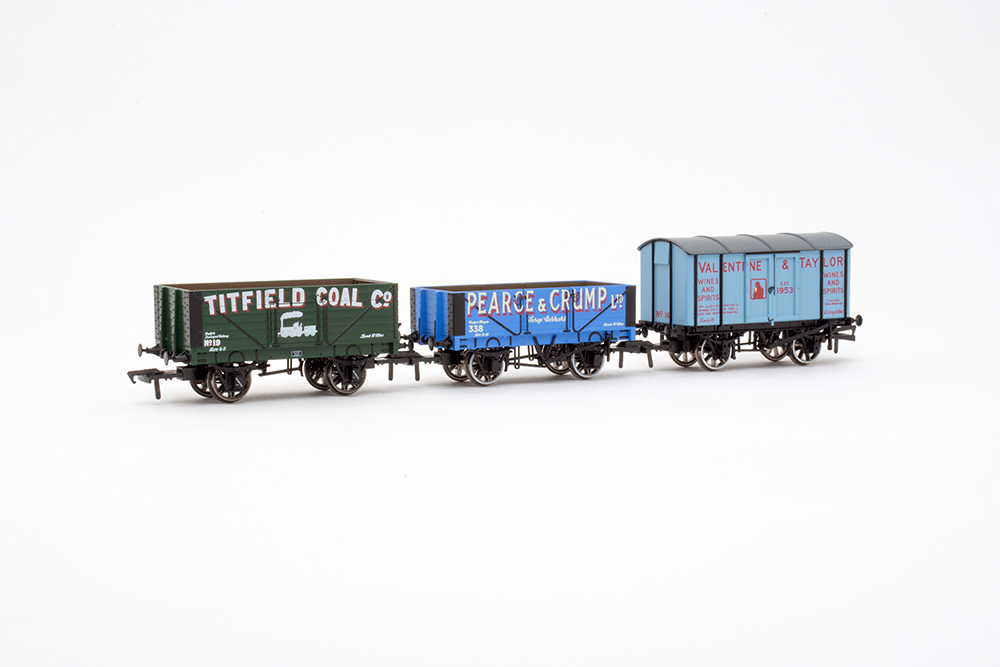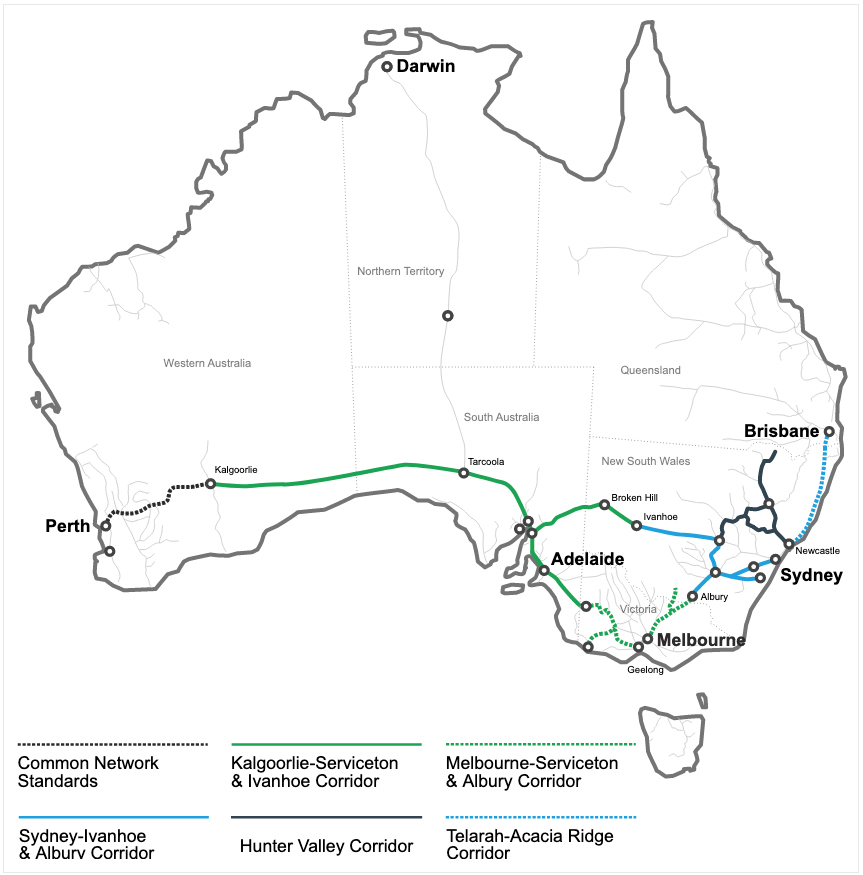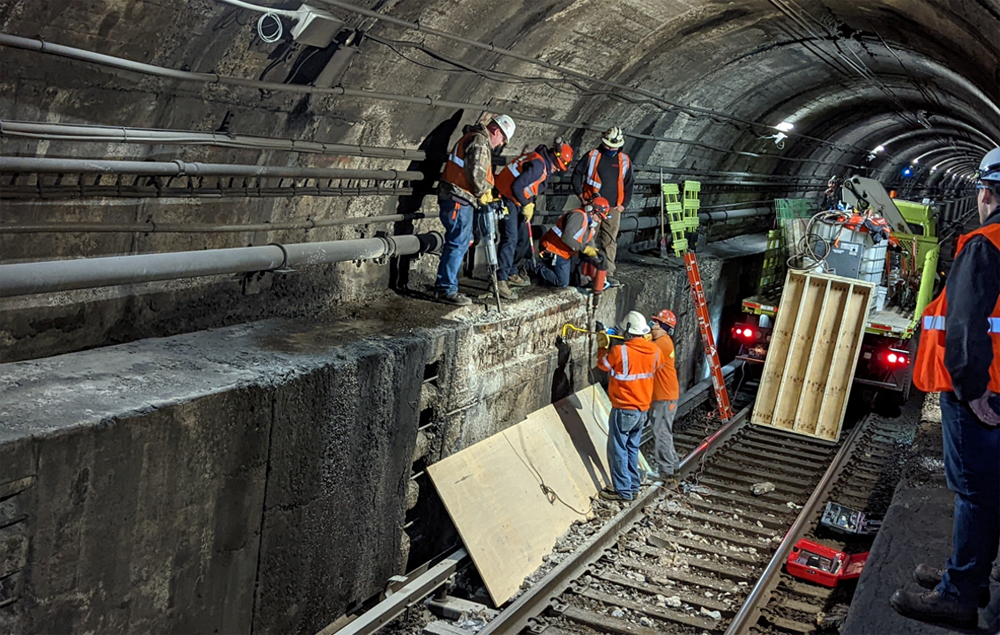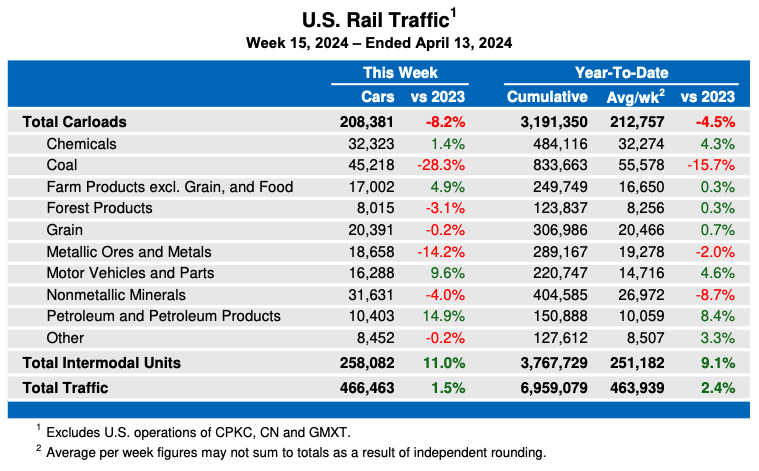Wall Street analysts quizzed Harrison for nearly two hours during the railroad’s first-quarter earnings call this morning. While Harrison said many details remain to be worked out — he’s only been CEO since March 6 — he touched on a wide range of subjects, from gaining business off the highway to one-person crews.
Harrison sought to cast aside any notion that the complex CSX network would pose challenges to his precision scheduled railroading operating model.
“I know of no reason that this railroad can not become the greatest railroad in North America,” he said in his first public remarks since becoming chief executive.
Unlike the linear systems of Illinois Central, Canadian National, and Canadian Pacific that Harrison transformed into efficient and profitable railroads, CSX’s route map is a bowl of spaghetti.
“You look at the hand you’re dealt and you say look, what is the best way to operate and run this franchise,” Harrison says, conceding that CSX is far more complex than the Canadian railways. “The way, you know, to handle that is eat the spaghetti and get rid of it.”
And that means not sending trains through every terminal en route simply because the terminals are there.
CSX has taken two major steps to streamline operations since Harrison’s arrival, Chief Operating Officer Cindy Sanborn says.
First, CSX has begun to take some traffic that previously moved in unit trains and merged it into the merchandise network. This allows the railroad to provide seven-day-a-week service and bring balance to the system while increasing train length, reducing terminal dwell, and improving transit times.
Second, CSX has converted four of its 12 hump yards to flat-switching facilities. Shutting down the humps cuts costs and reduces the time cars sit in yards, Sanborn says.
“We expect to continue to reduce several hump yards,” Sanborn says. “We don’t have a hard and fast specific number. We will look at each one individually. We will make sure we are making the right decisions to improve productivity and service.”
Hump yards date to an era when a much higher percentage of traffic moved in merchandise service than it does today, Harrison says. Not all of the railroad’s humps are needed today, Harrison says, and some of them are so old that CSX can’t get retarder replacement parts.
“They’re simply not made anymore,” he says.
Elsewhere, CSX will look to close redundant yards. In Atlanta, for example, Harrison says CSX’s four yards could be consolidated into one super facility, with the real estate from closed yards sold off.
But Harrison does not anticipate any major line sales this year as the railroad concentrates on improving operations on the current network.
Harrison is weighing changes to CSX’s operational structure as part of a war on bureaucracy. The railroad’s nine operating divisions will be cut, perhaps to just “a couple,” Harrison says, noting that “lines on an organizational chart just cost money.”
And CSX’s nine dispatching centers will be consolidated, as well.
CSX currently has about 550 of its 4,400 locomotives stored. Expect another 550 to join them by the end of the summer as the railroad streamlines its operations, Harrison says. Some 25,000 freight cars are likely to be parked as well.
The railroad expects to achieve record cost and productivity savings this year, on top of last year’s record $430 million in savings, Chief Financial Officer Frank Lonegro says. That will help CSX achieve a record-low operating ratio in the mid 60-percent range this year, he says. Harrison said it’s likely that CSX’s operating ratio will decline to the low 60-percent range next year.
From a service standpoint, CSX already does a good job reliably husting intermodal trains across its system, Harrison says.
But merchandise customers can expect major improvements in transit times, Harrison says, such as cutting two to three days off shipments moving from Chicago to Florida.
“I think that’s pretty exciting for the customer base,” he says.
“Our train speed is not where it ought to be,” Harrison says. “Our merchandise train speed between terminals is like 18 mph. We’ve got the potential to be at 27, 28.”
And once trains begin skipping terminals en route, transit times will improve even further, he says. The goal is to provide merchandise service that’s on par with trucks.
“We are very excited about what this operating model can do for CSX, not just in terms of the bottom line but what it can do for our customers,” says Chief Marketing Officer Fredrik Eliasson.
Harrison was asked whether CSX would aim to drop some of its less-profitable merchandise traffic, like CP did during his tenure in Calgary.
“No, we’re not looking at demarketing,” he says. “We’re looking at marketing.”
CSX also will look to improve coal unit train service, Harrison says, by using fewer train sets and cycling them more quickly between mines and power plants.
CSX has put a hiring freeze in place and expects employment to sink by 9 percent this year due to attrition. Harrison says CSX does not have a target for a reduction in employee headcount. “It’s going to be what’s smart to do,” he says.
The railroad may consider pulling out of national negotiations with its labor unions, Harrison says. He says he’d rather sit down with rail labor and do what’s best for the railroad and its employees.
Harrison says he’d like to reach an hourly labor agreement with train and engine crews. Such an agreement would guarantee jobs for union employees, he says, while reducing CSX’s train and engine crew costs by 30 to 35 percent.
Harrison says he doesn’t understand the rest of the industry’s push toward one-person crews.
“I’m not a one-man crew advocate,” he says, although he notes that there are situations where they might make sense, such as switching at mines.
“But today to take a 20,000 ton train on line of road, with one person, I don’t think it’s good business,” Harrison says, citing safety concerns and the value of an extra set of eyes and ears in the cab. Plus, he says, it would pose unacceptable delays when a lone crew member has to contend with a broken air hose or a knuckle failure.
CSX trimmed its capital budget for this year by $100 million. Executives hit the pause button on some network investments in light of pending terminal and operating changes, Lonegro says. Looking longer-term, it’s unlikely CSX will be in the market for new locomotives in the next few years, Harrison says.
The railroad will continue to invest in longer sidings, Harrison says, particularly in the Chicago-Florida corridor where train lengths are limited by 6,500-foot sidings. Previously, CSX said it planned on extending or adding 27 sidings in the corridor.
But instead of building new sidings from scratch, CSX will take a more cost-effective approach like Harrison did at CP.
“If we have sidings that are too short for the longer trains, we’re certainly not going to leave those sitting in the ground and not being utilized,” Harrison says. “We’ll pick up one 6,500-foot siding and move it 15 miles down the railroad and put it with another 6,500. We’ve got a 13,000-foot siding.”
Harrison became CEO after a boardroom battle led by activist investor Mantle Ridge. Harrison left five months early from the top job at CP so he and Mantle Ridge CEO Paul Hilal could pursue a management shakeup at CSX.















The wreckening has begun.Still glad we have Norfolk Southern & CSX in this area
The only way to simplify a network is to complete eliminate portions of it. You either get a short line partner or abandon the route. That reminds me of the days that Conrail started abandoning a lot of the TOFC traffic stating “While it is profitable , it’s just not profitable enough”. It sounds real odd that you are going to get more business by idling 25,000 freight cars. What are those cars doing now?
How to wreck a railroad! This guys a joke! Take warning stockholders.
Eat the spaghetti! Funny! But, the point is, if the network is too complicated to understand, simplify it. 20th century thinking. You want an optimized system, not on that fits in a single human brain. We have network modeling these days, you know…
These multiple year locomotive purchase contracts were signed when traffic was still growing. It’s 20-20 hindsight to consider that they should’ve been smaller or not entered into at all.
Nonetheless, they have two silver linings. One is to allow older and (in theory) more expensive to operate locomotives to be stored instead. And a second is to maintain a healthy domestic supplier industry. Unlike passenger cars for example.
They’re also (unlike track capacity) fungible and available to grow market share, for instance from shrinking coal or CBR to intermodal.
I wonder how railroads can afford to have the large number of units stored that they do? I realize there’s not much else they can do with them but I wonder if more common sense motive power purchasing could have been used. That’s a huge amount of money sitting idle and not making $$.
In the real world, in the last two weeks on CSX’s Western & Atlantic mainline, crossing the line several times a day, I have seen one running train and parked train. I have seen at least fifteen trains during the same time period on the nearby NS Atlanta North District.